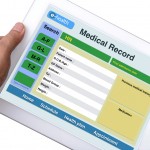How can doctors and patients benefit from EHRs?
Patient outcomes have continuously improved as a result of electronic health records, as they offer health care providers quick and direct access to their patients' health information. This in turn provides their patients with improved medical care. According to HealthIT.gov, EHRs have been proven to enhance the process of diagnosing diseases while preventing medical errors. Meanwhile, technological advances in personal health records are also increasing convenience for patients accessing their data.
How patients benefit
According to InformationWeek, OpenNotes, a pilot study in 2010, involved medical notes made available to patients by their doctors through an online portal. Once the first year was completed, the study showed 80 percent of the program's patients felt that they had a more thorough grasp on their current health conditions. More than half of the participants also reported that having access to their notes aided them in sticking with their prescriptions.
The OpenNotes study also showed that all participating doctors reported that patient feedback following discussions concerning their medical records reduced errors in diagnoses. When doctors and their patients effectively communicated and their patients were able to give insight and respond to doctors' observations, there were fewer occurrences of malpractice and misdiagnoses.
Therefore, doctors who create a PHR system better enable their patients to stay actively engaged in their treatment process, which ultimately leads to enhanced adherence. It also improves outcomes and costs because it lowers the risk of emergency care and mediates serious conditions.
However, the benefits of accessible online health records will only grow with time. According to the news source, Kaiser Permanente of California has recently developed a system that enables patients to use their phones to access their records. In addition to an online portal, patients can now review their data through iOS and Android apps. There are even future systems in the works that are focusing more on data recorded by patients themselves.
Improved technology
The Centers for Medicare and Medicaid Services reported that as of 2013, 58.6 percent of hospitals have EHRs in place, but only 3.1 percent of hospitals meet stage 2 meaningful use criteria. Improved technology will help raise this number.
Federal cloud architecture combines the capabilities of several internal and external cloud services. Although EHRs have provided significant benefits to patient outcomes, InformationWeek reported that investing in the development of a federated cloud architecture will enhance EHRs, improving patient accessibility even further and offering increased mobility while ensuring that data is secure and private.
Social service workers, speech pathologists, behavioral professionals and other independent health care providers have begun using advanced technologies to make patient information more accessible. For example, they have become accustomed to organizing and keeping track of their records through the use of small-scale, HIPAA-compliant cloud services. Google Drive and Amazon AWS are included in most of these services, according to the news source.
With several technological advances in the works, it is likely that patients will soon have the option to sync their data from fitness and biometric apps and devices with their PHRs and securely access that data on any mobile device, including the recently released Apple Watch.



